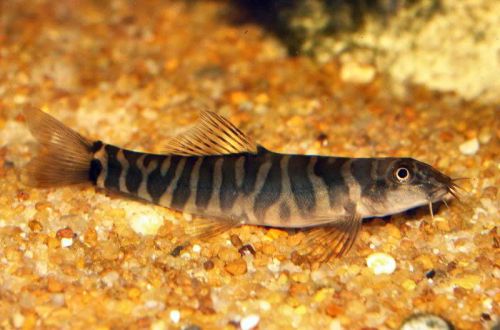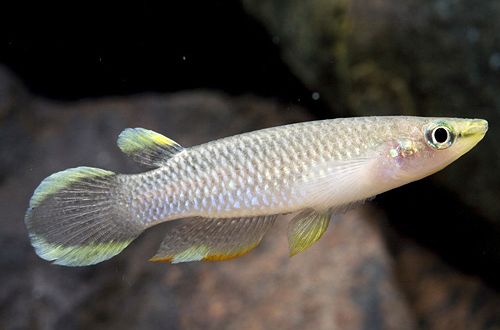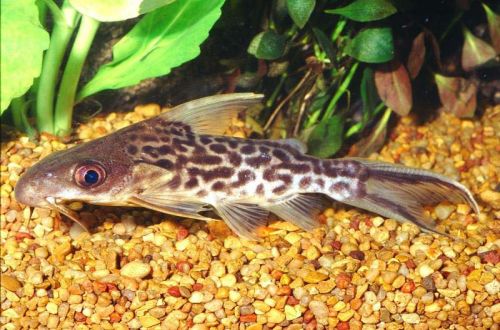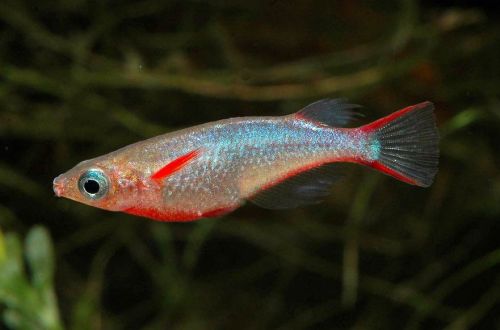
Shistura Mahongson
Schistura Mae Hongson, scientific name Schistura maepaiensis, belongs to the Nemacheilidae family. The fish is named after the region where it was found – a mountainous province in northeastern Thailand. It is not among the popular aquarium fish, however, it is sometimes available for sale. Relatively easy to keep, but requires a fairly strong current, which in turn limits the number of compatible species.

Contents
Habitat
It comes from Southeast Asia from the territory of Thailand. It is endemic to the small mountain river Mae Hong son, which gave its name to the province of the same name. A typical biotope is a shallow stream (0.5–1.5 meters deep) with a rapid current and boulder substrates, flowing along the slopes of a mountain range in a tropical forest canopy.
Brief information:
- The volume of the aquarium – from 80 liters.
- Temperature – 20-26°C
- Value pH — 6.0–7.5
- Water hardness – soft to medium hard (2-12 dGH)
- Substrate type — stony
- Lighting – subdued or moderate
- Brackish water – no
- Water movement – moderate or strong
- The size of the fish is about 4 cm.
- Food – any sinking food
- Temperament – peaceful
- Content alone or in a group
Description
Adult individuals reach a length of about 4 cm. The body is elongated with a plump abdomen. On the head near the mouth are small antennae. Fins and tail are short. The color is pale yellow with a pattern of 10-13 dark vertical stripes of irregular shape. Sexual dimorphism is weakly expressed, it is problematic to distinguish a male from a female.
Food
An omnivorous species, in nature it feeds on small aquatic insects and other invertebrates, which can be found among the stones at the bottom. In a home aquarium, they will accept dry sinking food in the form of flakes, granules. You can diversify the diet with live or frozen brine shrimp, bloodworms, etc.
Maintenance and care, arrangement of the aquarium
The optimal size of the aquarium for a small group of 4-5 fish starts from 80 liters. The Shistura Mae Hongson is easy to keep if kept in an environment that resembles its natural habitat. In the design, it is recommended to recreate the bottom of a mountain river with rocky soil, large boulders, rock fragments and snags. Plants, artificial or living, from among the species capable of growing on a woody surface, stones. For example, anubias, bucephalandra, some mosses and ferns.
It is important to ensure the movement of water, simulating the flow of a river, and a high concentration of dissolved oxygen. Both tasks can be handled by a productive filtration system from internal filters.
Like other fish inhabiting flowing waters, this species is sensitive to the accumulation of organic waste. Filters are not a guarantee of purity. It will be necessary to replace part of the water weekly with fresh water at least 30-50% of the volume, as well as regularly clean it, removing plaque, food residues, excrement, etc.
Behavior and Compatibility
They show some territorial behavior, prefer to occupy a site at the bottom, choosing a suitable crevice, cave. If you provide plenty of hiding places, then a whole group of Shistur will get along perfectly in one aquarium. Peacefully tuned to other species. However, a turbulent medium (strong current) significantly reduces the number of possible neighbors. As the latter, you can pick up other loaches, catfish corridors, acanthophthalmus. With a moderate flow of water, barbs, danios and other cyprinids can be settled.
Breeding / breeding
At the time of writing, the authors could not find reliable information about the successful breeding of this species in a home aquarium. This is largely due to its low prevalence in amateur aquariums.
Fish diseases
Health problems arise only in case of injuries or when kept in unsuitable conditions, which depresses the immune system and, as a result, provokes the occurrence of any disease. In the event of the appearance of the first symptoms, first of all, it is necessary to check the water for the excess of certain indicators or the presence of dangerous concentrations of toxic substances (nitrites, nitrates, ammonium, etc.). If deviations are found, bring all values back to normal and only then proceed with treatment. Read more about symptoms and treatments in the Aquarium Fish Diseases section.





